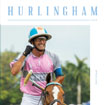Fortune Heights Hosts Snow Polo World Cup For Second Year Running
12 teams from around the world vie for the championship
Tournament started today at Tianjin Goldin Metropolitan Polo Club
The Fortune Heights Snow Polo World Cup 2013 (“Snow Polo World Cupâ€) began today at Tianjin Goldin Metropolitan Polo Club (“Metropolitan Polo Clubâ€). Snow Polo World Cup is one of the major events on the world polo calendar, and is the largest snow polo tournament in the world. This is the second year running that Metropolitan Polo Club, the largest polo facility in China, has been chosen as the venue of this prestigious event. The tournament is hosted by the Equestrian Association of China and the Federation of International Polo (FIP), and is organized by the Tianjin Sports Bureau, the Hong Kong Polo Development and Promotion Federation (HKPDPF) and the Tianjin Polo Association, with support from various sponsors.
Twelve teams are participating in this year’s tournament with handicaps ranging from 14 to 16 goals. The teams, selected in cooperation with the Federation of International Polo, represent 9 out of the top 10 polo countries. Countries represented are: Argentina, Australia, Brazil, Canada, Chile, England, France, Hong Kong SAR, India, New Zealand, South Africa and the USA. According to Federation of International Polo President, Dr. Richard Caleel: “together, we have assembled 12 national teams of exceptionally talented players to produce an event of extraordinary competition in the world of international poloâ€,
Tianjin joins the exclusive resorts of St Moritz, Switzerland and Aspen, Colorado as home to one of the world’s top 3 snow polo tournaments. Considered in some ways more challenging than regular polo, snow polo is played on a smaller pitch, with less traction than a regular field, with ponies which have been specially conditioned to be able to withstand the challenging conditions. Snow polo requires an inflated ball which is softer and larger than a regular polo ball, and which is therefore more challenging to control, affording the game an increased level of unpredictability and excitement. 2/5
Results from the First Day of Tournament
His Royal Highness, Prince Sufri Bolkiah of Brunei threw in the ball to start the first game of the tournament, between England and the USA. England took the lead in the first chukka, with the team’s top handicapped player James Harper scoring 2 goals in succession. The first goal for the USA was valiantly scored in the second chukka by the USA’s lead player Mike Azarro with a superb backhand shot after a furious melee and in which two strikes were repelled by the English defence. The strong England defence continued in chukka 3 with the USA just not succeeding in breaking through. With 20 seconds to go, England was up 4:1, when veteran player Rob Yackley, refusing to yield, succeeded in sending a 60 yard shot into the goal from the sideline. As the first game of the tournament ended 4:2 in favour of England, teams from around the world looked on, studying the field and planning their tactics for the tournament.
After an interlude in which the spectators were entertained by a deeply moving performance from the Buenos Aires Opera Show, the second game matched Hong Kong, China and Brazil. Hong Kong, as last year’s victor, did not allow themselves any complacency. As team captain John Fisher stated after the game “we cannot take anything for granted, anything can happen out there on the field, we do our best to plan, to select our ponies, and to adapt to our opponents, but the nature of this game is such that the only thing you can rely on is that the unexpected will happenâ€. The game indeed began in the first chukka without a clear leader, ending 1:1, with Brazil demonstrating superb positioning and teamwork. The Hong Kong team came into full harmony and intensity in the second chukka, and despite impressive defense from Brazil, it was Hong Kong’s lead player Guillermo Terrera who scored 3 goals in succession, with Brazil taking one goal on a penalty. Hong Kong and Brazil both adapted tactics in chukka 3, this time with Hong Kong scoring 3 more goals, even after Terrera suffered a mallet blow to his hand. Brazil found their “snow feet†and scored back 2 in succession.
The day’s game play ended with South Africa vs. India. Although an even match based on handicap, the South African team was on superb form, demonstrating a level of ball control that could not be matched by their opponents. The unrestrained competitive spirit of the South African offense repeatedly cut through the India defense, to score 7 goals over 3 chukkas, even with lead player Tom de Bruin falling twice and earning the nickname “snowman†after scoring with fresh snow covering his tunic. The India offense, although equally spirited, failed to exert sufficient control in the challenging conditions of the field, and ultimately scored 3 goals, all on penalty shots. As one player commented, “playing on snow is an art, it is about touch, knowing when to be soft, knowing when to gently caress the ball, and knowing when to swing hardâ€. Perhaps India will be practicing their snow technique before their next match, against France.
Tomorrow spectators have the opportunity to see another 3 matches: Argentina, will match against Canada; England will match against New Zealand; and Chile will match against Hong Kong, China.


